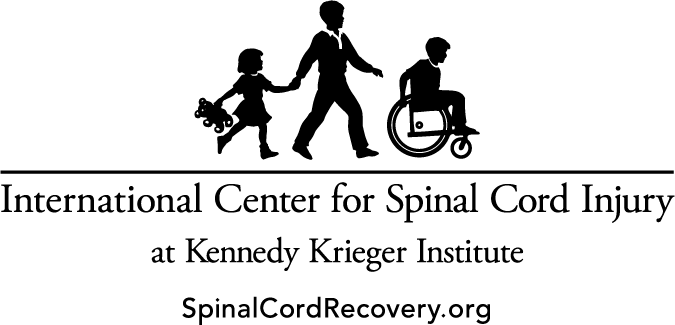March 27, 2025
Collateral Damage: How the Wrong Program Got Shot Down in the Hunt for Government Waste
Jason Stoffer
You may have heard, but spinal cord injury research just took a MAJOR blow and we need to do something about it, NOW.
What Happened?
On March 15th, The 119th Congress passed and POTUS signed into law a continuing resolution bill, H.R. 1968. This bill cut about $850 million dollars in medical research funding being conducted for veterans, with civilians benefiting as well. As part of the collateral damage, arguably the most effective Spinal Cord Injury Research program in the world was eliminated. The $40M program made up roughly 1/3 of the entire Federal allocation of funding toward SCI Research and there’s a good chance you’ve never heard of it.
What was this obscure program?
The Spinal Cord Injury Research Program (SCIRP) lived within the Congressionally Directed Medical Research Program (CDMRP) and was administered by the Department of Defense. Its primary goal was the treatment and recovery of spinal cord Injury for the war-fighter and by extension, US citizens.

From the SCIRP website.
Why was it so important?
Making up a mere .005% of the Department of Defense budget, the SCIRP punched FAR above its weight, owing to its razor focus on innovation, impact, and priority setting informed by people living with spinal cord injuries. I know this first-hand because, for four years, I was one of the SCI reviewers sitting at the decision-making table. That’s right. They mandated that “consumers” participated in peer review. As far as I know, it's the only Federal SCI funding program where that is the case.
SCIRP was not the “fat” that you wanted to trim. It was a lean, mean science machine, protective of its small pot of money and determined to fund only the right researchers, asking only the most important questions. SCIRP wanted deliverables: Shovel-ready clinical (human) projects, or projects that had a clear path to the clinic. It coordinated with the largest funder, NIH and others such as the Veterans Administration and private funders like the Craig H. Neilson Foundation, to make sure they weren’t funding redundantly.

Images taken from the SCIRP Impact Highlights report, 2023.
What was it producing?
The program was supporting the work of functional recovery, acute care and psychological health to name a few. Here are some recent project examples:
- Creating an early alarm system for the killer, Autonomic Dysreflexia.
- Hemodynamic Imagery to monitor crucial blood pressure, blood flow, oxygenation in the spinal cord during acute intensive care.
- Development of a catheter-free bladder volume monitor to let you know when you had to pee.
- Check out this link to highlights of SCIRPs clinical studies (before it gets taken down!!)
- You can read the full Impact Highlights report from 2023 here
A personal connection
So, how do I know all of this? Because I served as a Consumer Reviewer in Peer Review for the program for 4 years. Last year, I was invited to serve on the Programmatic Panel which makes final award recommendations and sets program priorities through “Vision Setting.”
With every opportunity I had to serve with this program, I was thoroughly impressed. I’ve seen behind the curtain, and what exists back there is competence in leadership, training and execution. The professional interaction and hard work given to scrutinizing each project during peer review was ever present. In my pre-injury life, I worked for two Federal agencies. I’ve seen the inefficiency decried in the current administration and can tell you - this wasn’t it.

Yeah, that's me with the fam at home in Montana.
How do you know for sure? I can’t find any news!
After HR1968 was passed, the Devil emerged in the details and on March 17th, a letter was written to the Secretary of Defense, Pete Hegseth, by the Chairs of House and Senate Appropriations Committee, Subcommittee on Defense, Ken Calvert and Mitch McConnell, respectively. The letter contained “project level adjustment tables” which listed the 12 research programs within CDMRP which were NOT getting cut (reach out to me if you want more clarity on this table). SCIRP did not make the list.
What are we doing about It?
Now is the time to organize and get loud about reinstating this program and each program which was indiscriminately axed from the CDMRP. We (U2FP) will be meeting with the leading organizations in SCI this week to organize a coordinated effort to reinstate this funding. But if you’re feeling antsy, visit our new action page which will be updated weekly. And If you want to contact lawmakers or people of influence now, just remember these most salient points:
- A THIRD of SCI research dollars, GONE! SCIRP, at a meager $40M, constituted almost one third of the entire FED allocation of SCI research funding. It was only .005% of the DoD budget AND It did not CUT INTO the DoD budget, but was added to it by Congress for the DoD to manage.
- SCIRPs projects are the ones closest to human application. It coordinated with NIH regarding who was getting funding and the focus of the projects. Of the two, it focused on clinical application and translation! NIH focused on basic and discovery science.
- SCIRP prioritized the warfighter. Vets, at over 40,000 make up a significant portion of the SCI population. In times of war, soldiers are 8-10X more likely to sustain an SCI than civilian population. The VA is the single, largest provider of spinal cord injury care in the US.
- SCIRP had its SCI population in mind. It mandated that "consumers," lived experience reviewers, sat on peer review alongside researchers. This steered their research funding priorities toward what actually needed to be studied.
- SCIRP projects would have reduced costs of care. SCIRPs research aims were to ameliorate the physical and psychological outcomes of SCI thereby REDUCING the tremendous cost of care for the SCI population.

















